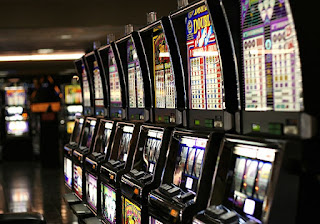Common Craps Bets
Craps is the quickest and one of the most intriguing gambling club games with north of 50 wagers on the format. What follows is a clarification of the most widely recognized wagers made by craps players, and the ones that are your smartest choices.
Pass Line
This is by a wide margin the most well-known bet made in craps. It is otherwise called a "line bet." When the dice passes to another shooter, craps players betting on the pass line are trusting that the shooter will win. 카지노사이트
The house edge is a level of each wagered you make that the gambling club hopes to win. On account of the pass line bet, the house edge is 1.41%. The last option happens in light of the fact that when you make a pass line bet, you can hope to win 49.3 percent and lose 50.7 percent of the time. As such, the principles favor the club winning a bigger number of wagers than the player, which makes its benefit.
One more method for assessing the "value" of a craps bet is its expense each hour. In a very much oversaw craps table, the dice will move around 100 times each hour.
Come Bet
A come bet is like the pass-line bet with the exception of you making it after the shooter lays out a point number on the come-out roll. The come bet has a similar success/lose rules as the pass line, meaning it wins in the event that the shooter tosses a 7 or 11 on the main roll after the come bet is made and loses if a 2, 3, or 12 are rolled.
If all things considered, the shooter tosses 4, 5, 6, 8, 9, or 10, it wins in the event that the number is moved again before a seven shows up and loses assuming that the shooter tosses a 7 preceding the number.
The house edge for a come bet is equivalent to the pass line: 1.41%. The expense each hour is likewise something very similar: $2 (adjusted) for a $5 come bet.
Tip: Making a bet is a brilliant wage to make.
Odds Bet
The chances bet is the smartest choice in the whole gambling club; yet, you won't find it marked anyplace on the craps format. The uplifting news is the payout chances for a triumphant chances bet are equivalent to the likelihood of the bet's triumphant; thus, the house edge is zero. The terrible news is that you can't make exclusively a chance bet; it should be made related to a pass line or come bet.
After a point number is laid out on the come-out roll, savvy craps players will back up their pass line bet with a chances bet. For instance, assume you bet $10 on the pass line, and on the come-out roll, the shooter tosses a 4 as the point number.
You can then put another $10 in chips straightforwardly behind your $10 pass line bet (addressing the chances bet). The shooter will keep on throwing the dice until one of two occasions happens. 안전한카지노사이트
Place Bets
A put down bet is a bet wagered that one of the point numbers will be moved before the shooter moves a seven. You can make a put down bet on the 4, 5, 6, 8, 9, or 10.
A portion of the last option numbers are harder to move than different numbers. Accordingly, the settlements on put down wagers contrast starting with one number then onto the next - and the house edge is unique.
The accompanying table sums up the house edge for a put down bet on each number and the expense each hour expecting a $5 put down bet (with the exception of $6 on 6 and 8 to work with an even dollar result), and 100 rolls each hour. (Note: The quantity of choices each hour will be somewhat unique, also: 30 for the 6 and 8; 28 for the 5 and 9; and 25 for 4 and 10.)
Field Bet
By all accounts, the bet looks great since you win assuming any of seven numbers is rolled and lose on just four numbers. Notwithstanding, here is the remainder of the story. The four numbers that the bet doesn't cover incidentally turn out to be the ones you are probably going to roll.
You'll win even cash on the off chance that a field number is rolled yet most clubs will pay twofold (2 to 1) on either the 2 or 12. This yields a house edge of 5.5 percent. A few additional liberal clubs pay twofold on either the 2 or 12 and triple on the other. This lessens the house edge to 2.8 percent.
The expense each hour on a $1 Field bet (expecting 100 choices each hour and a 12 paying 3 to 1) is $2.80. If the 12 pays 2 to 1, the expense each hour increments to $5.50. The explanation that the expense each hour is low for the field bet is that it's feasible to wager low sums (e.g., $1) which isn't the case wagering on the pass line and come. Assuming you bet more on the field, say $5, your expense each hour would be multiple times more prominent. 온라인카지노




Comments
Post a Comment